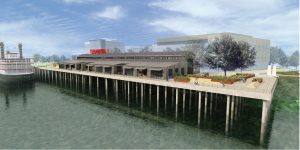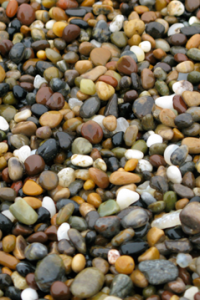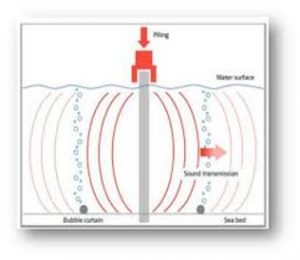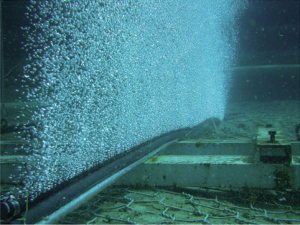Process to Replace Century-Old Dock to Begin
Have you been wondering what’s going on with the empty area at Terminal 1?
The next project in our Terminal 1 redevelopment is to replace the century-old dock. This dock is the birthplace of the Port of Vancouver USA and has served many purposes over the years including as the original shipping terminal for the port. It later housed a restaurant, hotel and event space.
In the coming years, the new dock will support a public market for the community to enjoy.
Crews will mobilize and begin demolition of the existing structure in early October 2023. When it comes to this type of construction in the Columbia River, work is confined to site-specific “in-water work windows” during which threatened and endangered salmon species are least likely to be present. These windows are determined by federal and state agencies during the project’s environmental permitting and approval process with the goal of minimizing construction impacts on aquatic life. In the case of our dock replacement project, this in-water work window occurs from October 1 through January 31 over a three-year period. The complete project will be constructed in three phases as follows:
Window 1 (October 2023 – January 2024) will see the demolition of the existing dock and removal of nearly 1,000 old wooden pilings — most of which date back to the 1920’s. Old pilings were often treated with creosote, which can leach into the river and impact aquatic life. This dock replacement project will remove these treated structures from the river.
In Window 2 (October 2024 – January 2025) crews will work on upland ground improvements; rebuilding the bulkhead wall where the dock meets the shoreline and regrade the slope, all of which will help stabilize the new structure during a seismic event. A fish-friendly gravel and/or coarse sand substrate will also be installed. This substrate provides salmon and other fish species improved habitat to forage for food and stay safe from predators.
Window 3 (October 2025 – January 2026) is where approximately 200 steel piles will be installed to support the new dock (and eventually, the public market).
In addition to adhering to the in-water work windows, another way we are reducing impacts from construction noise on aquatic life is with “bubble curtains.” While the steel piles are being driven into the ground, compressed air will be pushed through perforated pipes surrounding the work area under the water. This compressed air will form a ring of bubbles floating upward, creating a dense air wall that helps diffuse underwater noise that occurs from the installation of the new piles.
We’re excited to get to work and move one step closer to bringing a public market to Vancouver’s waterfront!




